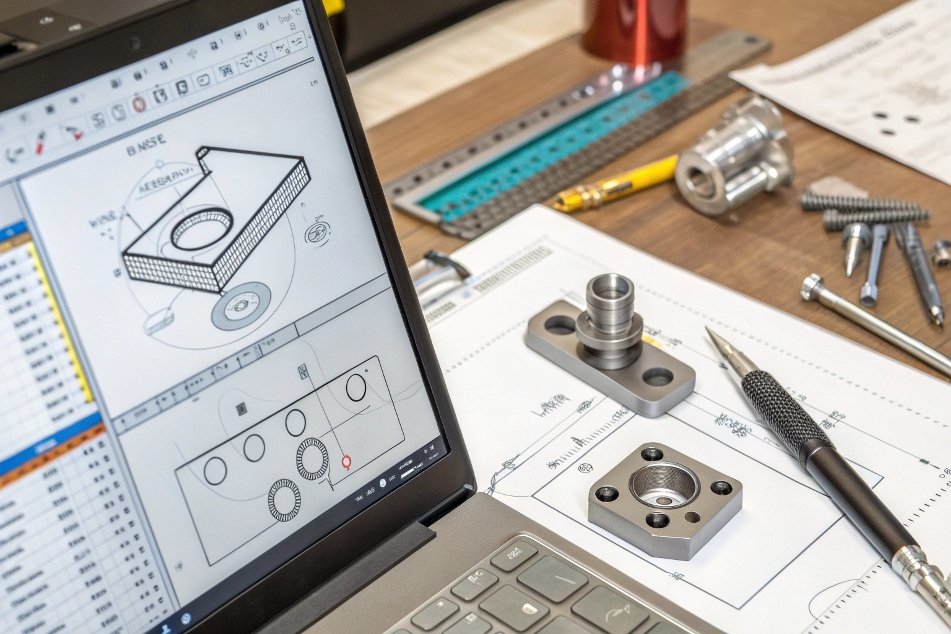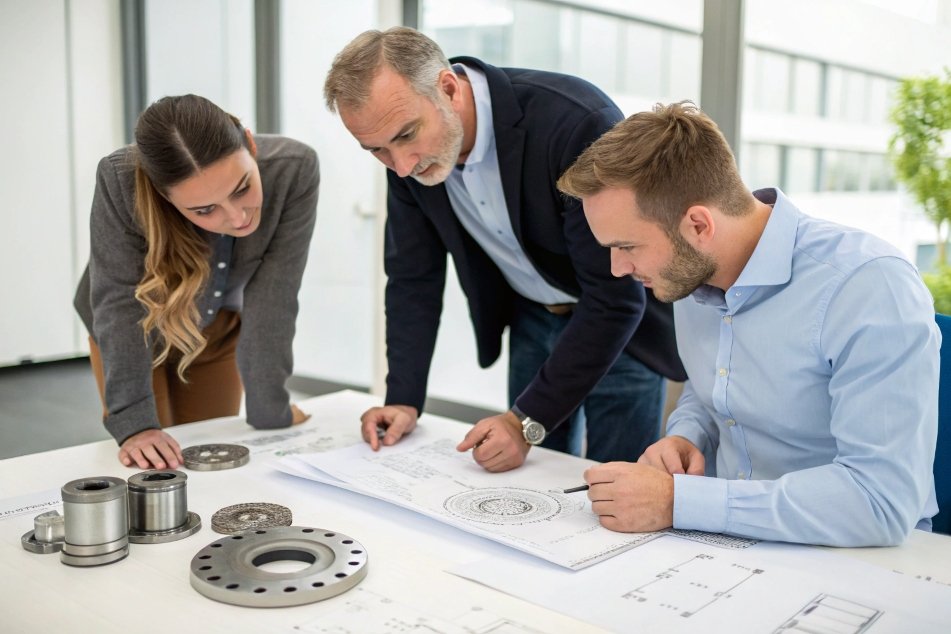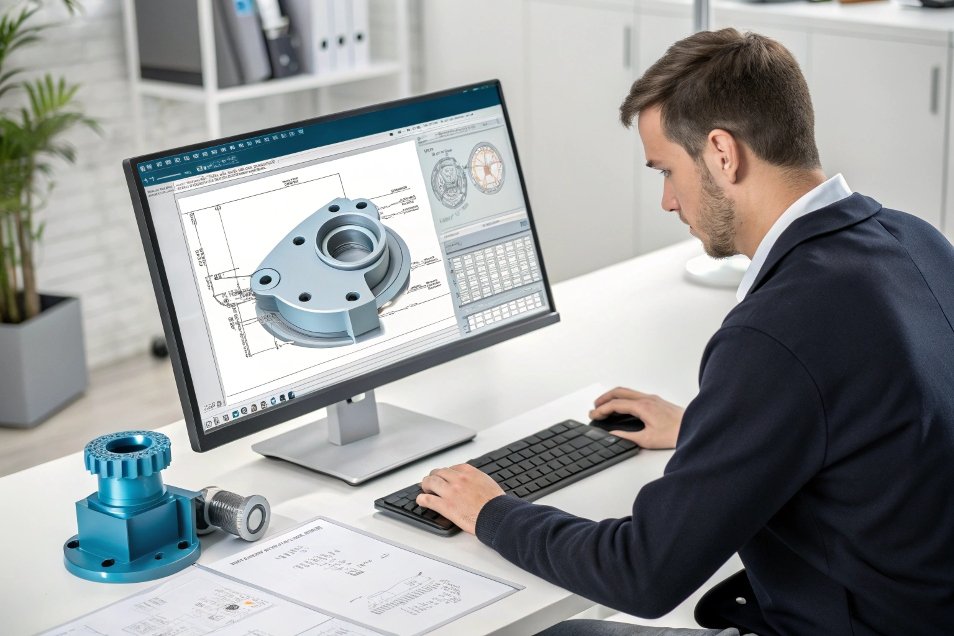
When I first started sourcing custom parts, I quickly realized how critical engineering design is in determining the functionality, quality, and efficiency of the parts we produce. Without a well-thought-out design, even the best materials and manufacturing processes can result in poor-quality parts. Engineering design acts as the blueprint for everything that happens afterward in the production process. Without it, you could be risking costly delays, reworks, or product failures.
Engineering design plays a central role in determining how well custom parts will function, how cost-effective they are to produce, and the overall quality. It’s the foundation upon which everything else is built.
In this article, I will dive into why engineering design1 matters so much, how it impacts custom part quality, and why collaborating closely with engineers during the design phase is essential for successful outcomes.
How Does Engineering Design Affect the Functionality and Quality of Custom Parts?

The design of a custom part directly influences its functionality and quality2. The choices made in the design phase impact everything from how well the part fits within the final assembly to its durability and performance under real-world conditions.
Key Impacts of Engineering Design on Custom Parts
| Design Aspect | Impact on Functionality and Quality |
|---|---|
| Material Selection | Determines strength, durability, and resistance to wear, corrosion, and temperature variations. |
| Tolerance and Fit | Ensures parts fit together properly without gaps or interference, affecting assembly accuracy. |
| Geometric Design | Affects the part’s efficiency in terms of space, weight, and how well it operates within an assembly. |
| Surface Finish | Influences the part’s ability to function smoothly and resist wear or fatigue under pressure. |
| Stress Distribution | Properly designed parts can distribute stress evenly, preventing weaknesses or failures. |
Why This Matters
In my experience, a small oversight in the engineering design phase can snowball into major quality issues later. For example, if engineers don’t take material properties into account when designing a part, it could lead to premature failure or poor performance. Similarly, if tolerances are too tight or loose, it could create fitment issues that slow down assembly or require costly rework.
Proper engineering design ensures that each part fulfills its intended function while meeting the required quality standards. In custom parts manufacturing, this process isn’t just about aesthetics—it’s about making sure the part works in real-world applications, performs under stress, and lasts the lifespan of the product.
Why Should You Collaborate Closely with Engineers During the Design Phase?

Collaboration with engineers during the design phase is essential for ensuring that the final product meets both functional and quality requirements. Engineers are the ones who translate the concept into a practical, manufacturable solution, and their input can significantly reduce the chances of production issues later on.
Benefits of Collaborating with Engineers
| Collaboration Step | How It Helps |
|---|---|
| Clear Communication of Requirements | Ensures that the design aligns with your exact needs and expectations. |
| Design Feasibility Check | Engineers can assess whether the design is practical to produce and suggest adjustments if necessary. |
| Material Selection Guidance | Engineers help choose the best materials based on the part’s intended use and performance needs. |
| Cost Optimization | Engineers can optimize the design to reduce unnecessary complexities and avoid excessive costs. |
| Early Detection of Issues | Close collaboration allows engineers to flag potential problems early, avoiding delays and reworks later. |
Why This Matters
From my perspective, collaborating with engineers during the design phase isn’t just beneficial—it’s crucial. Early collaboration helps ensure that the design is not only functional but also manufacturable. For instance, an engineer might spot issues with the design that you didn’t consider—perhaps the part’s complexity makes it difficult or expensive to produce, or certain materials don’t meet the required performance standards.
By working together from the start, you can address potential problems upfront, saving time and money during the production phase. Plus, engineers bring valuable insights into how to improve part design for performance, cost-effectiveness, and manufacturability, which ultimately leads to a better product.
How Can Proper Engineering Design Help Minimize Production Issues and Costs?

Proper engineering design doesn’t just enhance part quality—it can also significantly reduce production issues and minimize costs. By designing with manufacturing processes in mind, you can avoid common production pitfalls such as inefficient use of materials, excessive labor, or the need for expensive reworks.
How Design Impacts Production Costs and Efficiency
| Design Element | Impact on Production Issues and Costs |
|---|---|
| Simplified Geometries | Easier to manufacture, reducing machining time and labor costs. |
| Material Efficiency | Reduces waste and lowers raw material costs by using materials wisely. |
| Optimized Tolerances | Ensures parts fit properly, reducing rework and assembly time. |
| Process Selection | Selecting the right manufacturing process (e.g., casting vs. machining) can reduce overall production costs. |
| Manufacturability Testing | Allows you to test how the design will be produced, preventing issues before full-scale production. |
Why This Matters
In my experience, designing with manufacturing in mind can lead to significant cost savings. For example, parts with overly complex geometries may require expensive machinery and extended production times. Similarly, poor material choices can result in high scrap rates or durability issues, which increase costs down the line.
On the other hand, a well-engineered part that takes manufacturing constraints and material properties into account can be produced more efficiently, with fewer defects and at a lower overall cost. This kind of design foresight is the difference between smooth, cost-effective production runs and costly, delayed projects.
Conclusion
Engineering design is at the heart of successful custom parts manufacturing. It determines not just the functionality and quality of the parts, but also the cost and efficiency of the entire production process. Collaborating closely with engineers during the design phase helps prevent issues, optimize costs, and ensure that the final parts meet all necessary specifications. By prioritizing engineering design, you ensure that your custom parts are not only functional but also produced at the highest quality with minimal production hiccups.

